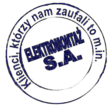Safety training
 Every employer, regardless of what his or her company does, is obliged to carry out occupational health and safety (OSH) training when hiring a new employee. Occupational Health and Safety is a set of rules and regulations for ensuring adequate health and safety for employees in the workplace.
Every employer, regardless of what his or her company does, is obliged to carry out occupational health and safety (OSH) training when hiring a new employee. Occupational Health and Safety is a set of rules and regulations for ensuring adequate health and safety for employees in the workplace.
Health and safety at work
Occupational health and safety courses are included in the Labour Code, Article 237&1, where it is regulated that employees who are not qualified and who do not know the health and safety standards may not be allowed to work. By attending such training, the employee (including a student or vocational school pupil) becomes familiar with all hygiene and safety rules, which must be strictly observed. Failure to comply with these rules may result in immediate termination of the employment contract (disciplinary action). It is also on the employer's side to strictly comply with the health and safety rules. Failure to do so is punishable by a fine. If an accident were to occur on the premises of the workplace where the safety rules were violated, the injured employee may claim appropriate compensation. In this case, the employer and its negligence are at fault. In a situation where an employed person would have suffered death, the employer may be criminally liable.
The employer shall provide health and safety training and shall bear the cost thereof. As a general rule, it should be carried out during the employee's working hours.
As far as the types of health and safety training are concerned, we divide them into two groups:
- initial training,
- periodic training.
Initial training
Initial health and safety courses should be conducted as soon as a new employee arrives at the workplace and before he or she starts performing his or her duties. This training is not required only if the employee enters into a subsequent contract with the same employer and in the same job position.
There are two parts to this health and safety course:
- general instruction,
- job briefing.
General instruction is carried out by a special organisational unit dealing with the activity. Instruction may also be organised by the employer or an employee designated by him - provided he has the necessary authorisation, experience and knowledge in the field in question.
The purpose of general instruction is to:
- Introduce the new employee to health and safety rules,
- familiarising the employee with the rules and regulations in force in the company,
- discussion of selected aspects of labour law: labour code, civil code, criminal code.
- imparting knowledge on pre-medical first aid,
- instruction in the event of a fire emergency.
General instruction applies to: new employees, students or apprentices. It must not last less than 2 lessons.
- Job briefing
Workplace instruction can be carried out by the employer or by the person who supervises the workers.
The purpose of the job briefing is to:
- familiarising the new employee with his/her workplace,
- outline the areas of occupational risk associated with the work,
- presentation of working methods,
- familiarising the employee with environmental factors (for example, those that can lead to accidents or occupational diseases; these are dangerous, strenuous and harmful to human health factors).
Job-related instruction applies to: employees being transferred to other workplaces, apprentices or students undergoing training or an apprenticeship, the employee. It should conclude with a test to test knowledge and skills on the job.
In the event that an employee works in more than one position, such job instruction must be given in each position.
Upon completion of the initial training (both general instruction and job instruction), the employee fills in a special OSH initial training card. It is placed in the personnel file at the company. He should also certify in writing that he has received such training.
Periodic training
Periodic training in occupational health and safety is carried out for the employee in order to consolidate his/her knowledge and skills in occupational health and safety. It is also needed to inform him of changes and new technical and organisational solutions, if any. The first periodic training should take place within 6 months of starting work for those in managerial positions and 12 months for other employees.
Periodic training, as in the case of initial training, can be carried out by the employer or a specially appointed organisational unit.
Periodic health and safety training includes:
- employers, managers and foremen,
- of employees in blue-collar jobs,
- employees who are in engineering and technical positions (including designers, constructors of machinery and other technical equipment, technologists and production organisers),
- employees of the occupational health and safety service together with other persons performing the tasks of the service,
- Persons in administrative and clerical positions.
- other workers whose work involves exposure to factors that are harmful to health, strenuous or dangerous.
Periodic training should conclude with an examination to test the participant's knowledge.
Validity of health and safety training
The validity period of the various health and safety courses varies depending on the type of training and the position in which the employee is employed.
Initial OSH training is valid for a maximum of 12 months from the start of employment (for managerial positions it is six months).
Periodic training depends on the position of the person employed and is valid from one to six years:
- For workers who perform particularly hazardous work - training is once a year,
- for workers in blue-collar jobs - training is provided once every 3 years,
- for employers and those in charge of employees (managers, masters and foremen), employees in engineering and technical positions (designers, constructors of machinery and other technical devices, technologists and production organisers), employees of the occupational health and safety service and other persons who perform the tasks of this service - the training is conducted once every 5 years,
- For administrative and office staff - training is provided once every 6 years.
It is possible to exempt certain professional groups from periodic training, this has been defined in the relevant regulations.
In conclusion, the organisation of health and safety training, both initial and periodic, is a very important area of activity for every organisation in Poland. Both employers and employees should take this subject seriously and follow the rules. After all, it is about our safety and health.

































